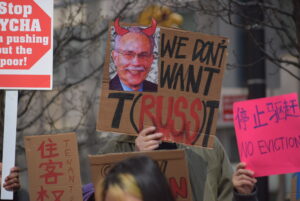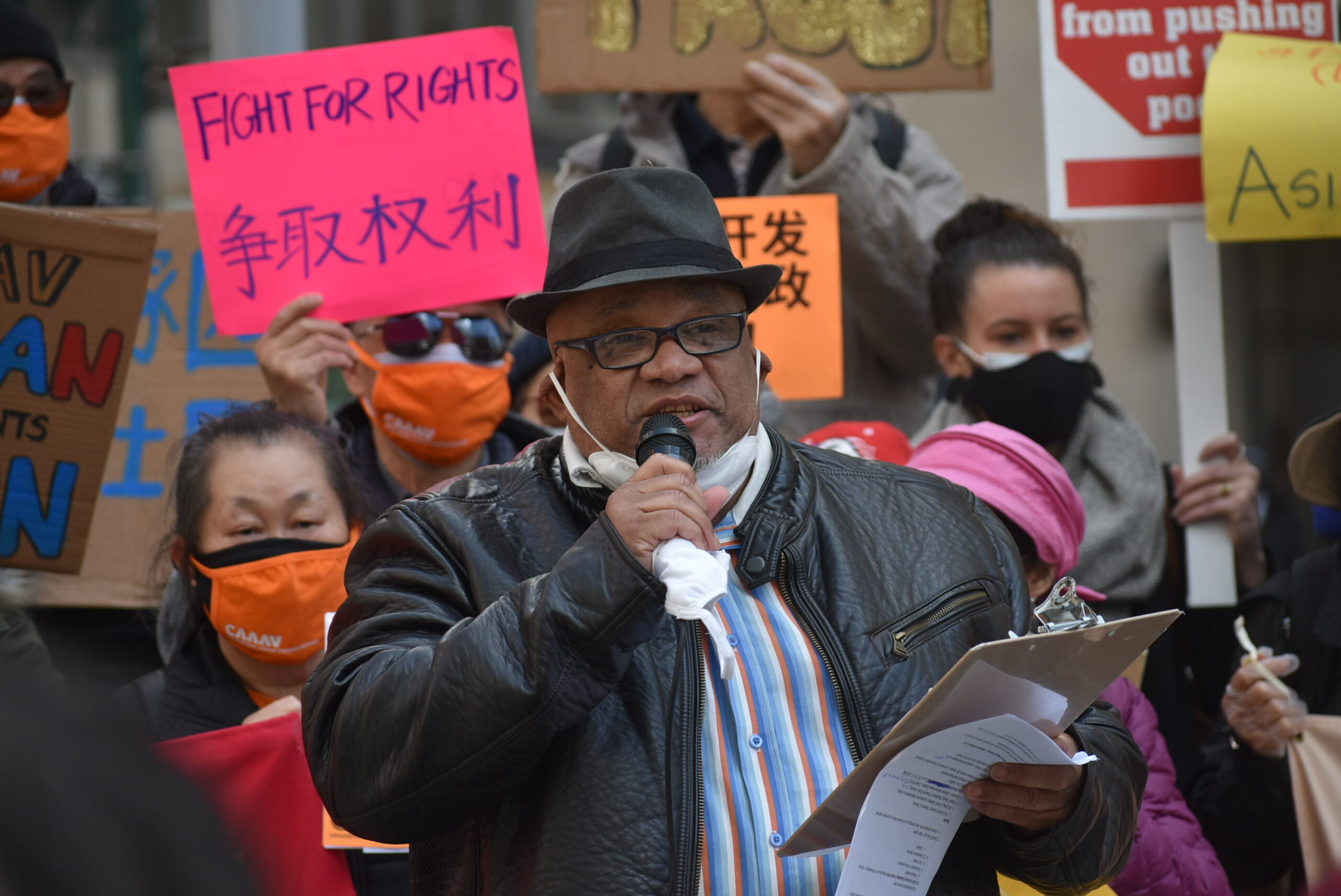The New York City Housing Authority needs money — a lot of it.
Most of its apartment units are considered “obsolete” by federal standards, meaning they cost more to repair than reconstruct, and they’re even eligible to be demolished or sold. If developments are going to get anywhere near livable conditions for the next century, NYCHA requires roughly $40 billion to address myriad problems in its developments. This includes fixing elevators, restoring plumbing and ventilation infrastructure, and abating pests, mold and lead.
But where will all the money come from?
Hunter College Professor of Urban Policy and Planning Nicholas Bloom said, “barring the arrival of the social-democratic utopia that some are hoping for in New York,” NYCHA’s proposed Blueprint for Change makes the most sense.
The Blueprint seeks to convert the city’s entire Section 9 public housing stock to Section 8, opening up more avenues of federal and private funding for repairs. In addition, a new entity – the Public Housing Preservation Trust – would manage capital funds and be allowed to circumvent much of the red tape NYCHA currently has to follow to complete renovations.
It’s the latest proposal in a list of many divisive public housing initiatives. NYCHA sees it as the only way to fix itself, while some residents see it as privatization.
Right now, the federal government allocates less than $1 billion in capital funds for NYCHA each year. There’s no chance NYCHA can renovate itself in a reasonable amount of time under the current model, Bloom said in a phone interview.
“Public housing isn’t really a national priority,” he said. “It has a very unstable funding source – public housing – compared to Section 8, which has a more stable funding element because it’s a public-private partnership, and those tend to be more popular in other cities.”
Alex Schwartz, a professor of urban policy at the New School, agrees with Bloom.
“The amount of money Congress provides is nowhere near the amount needed,” he said in a phone interview. “The housing is deteriorating before our eyes, and if you don’t do something it will continue to deteriorate to the point where it’s uninhabitable.”
Section 8 tenant protections vouchers are worth twice as much as other federal funding sources, according to NYCHA’s FAQ on the Blueprint. With the extra money, NYCHA can raise funds through bonds and loans to pay renovations, and the debt obligations would be paid back using the additional TPV subsidy.
Schwartz said Section 8 is more reliable because it would be a bigger headache for Congress to not fund it.
“Public housing often carries a stigma,” he said. “The constituency are public housing authorities and tenants. With project-based Section 8, you’re talking about private sector developers, property managers. You usually have a broader constituency. If Congress were to not adequately appropriate funds for Section 8, all these private sector actors would default, and that would create a massive problem.”
Public housing was a major concern for the federal government starting in the 1930s. It began as a way to house military arms workers and their families. It also propagated racial segregation whose effects still linger to this day. Public housing existed on small and large scales all across the country but started to dwindle by the ’70s, and it became less of a concern for the federal government.
Public housing still exists in cities such as Baltimore, Chicago, Boston and Philadelphia, but all of those combined equate to roughly half of the units in NYCHA. Excluding the 62,000 that have been approved for Rental Assistance Demonstration conversions, NYCHA contains about 110,000 Section 9 apartments. RAD is another Section 8 conversion program that has private companies manage NYCHA-owned buildings.
“That’s NYCHA’s problem,” Bloom said. “The federal legislation has to be NYCHA legislation. That makes it pretty tough.”
Congress members, including Ritchie Torres, who represents much of the south Bronx, requested $70 billion for public housing in President Joe Biden’s recently announced $2 trillion infrastructure plan. Biden’s plan would have only $40 billion go toward capital improvements in public housing.
Even if NYCHA did secure plenty of federal funding, it wouldn’t have much longevity, according to Eva Trimble, NYCHA executive vice president for strategy & innovation.
“It still needs to change, so that we’re not back in this position in 40, 50 years, where the capitalization that happened now, is now deteriorated and how do we once again raise $40 billion,” Trimble said during a presentation with the New York City Housing Conference Wednesday, March 31.
“These one-shot lump sums of funding are great, but it doesn’t change the long-term perspective,” she added.
In addition to the conversion from Section 9 to Section 8, NYCHA would create a new public entity, the Public Housing Preservation Trust, which would fund capital improvements and contract NYCHA workers to maintain properties. NYCHA would still own and manage all its developments while the trust provides money for capital improvements. In a 2020 press release, the Community Service Society described the trust as a “small bureaucracy” able to sidestep federal procurement restraints on NYCHA and contract to large-scale construction management firms and use design-build approaches.
The trust is expected to be led by a nine-member board — five picked by NYCHA and four picked by City Hall. Four of the total members would be resident leaders – again, two picked by NYCHA and two by City Hall. Its creation hinges on state Legislature approval.
The trust is similar to the city’s School Construction Authority, which takes care of capital improvements within Department of Education schools. Bloom said New York and the U.S. as a whole rely on quasi-government groups such as the city Economic Development Corporation and Port Authority to fund its projects.
“I think it would be different in a country that really believed in infrastructure and funding it,” Bloom said. “In order to create the large-scale infrastructure a city like New York needs, there are a lot of agencies, authorities, trusts.”
According to NYCHA’s website, resident living and tenants’ rights won’t change under the Blueprint.
Rent will still be capped at 30% of the resident’s income. No one will be displaced during the renovations. Residents will still keep all the protections they have now such as the right to organize.
However, many NYCHA resident’s don’t trust these promises, consider the conversion privatization and actively oppose both the Blueprint and RAD.
Dozens of residents protested outside the NYCHA offices in Manhattan on Tuesday, March 23. They held signs that said, “Listen to tenant voices,” and “Money for repairs, not privatization.” One resident’s sign had NYCHA CEO and Chair Greg Russ with devil horns surrounded by hundred-dollar bills.

“It’s true tenants are wary and distrustful, and they have every right to be,” Schwartz said. “There have been a lot of proposals, and tenants have not been consulted that much. I think under Russ, there has been more of an effort to consult.”
Some residents are against the Blueprint because they feel there is not enough information on how exactly the switch to Section 8 and the trust will provide more funding.
In an Op-Ed the Herald recently published, Millbrook Houses resident Caesar Yoc said, “Clear answers were not given when concerned groups asked questions. There has also been hardly any community outreach to the hundreds of thousands of people that this proposal will impact.”
NYCHA has continued to hold online informational sessions throughout the pandemic, which isn’t always ideal for older or less tech-accessible residents. According to a 2019 city Department of Health report, an estimated 110,000 adults 65 and older live in public housing. That’s about a fourth of the entire NYCHA population.
“The trust has a large array of things that we’re not too familiar with,” said Adams Houses President Ronald Topping. “Once again, (NYCHA) has not discussed this with us.”
During a recent mayoral forum hosted by Residents to Preserve Public Housing, candidate Joycelyn Taylor, who grew up in NYCHA, said she doesn’t support the Blueprint because so many residents don’t support it.
“Now more than ever, the Blueprint and RAD should be a non-issue,” she said. “We need to ask the federal government to step up to the plate – if it’s spending $2.2 trillion – we have to ask the federal government to step up to the plate and invest in NYCHA in a way that makes the residents of NYCHA whole.”
Section 8 generally means housing on the private market where rent is partially subsidized by the government. The blueprint and the trust would be different, Bloom said.
“I can see the argument around RAD as having elements of privatization, but I don’t see how the trust qualifies for privatization,” he said. “I hope that people’s attempts to align themselves with an anti-privatization mantra can see past that and see that it would improve people’s lives.”

